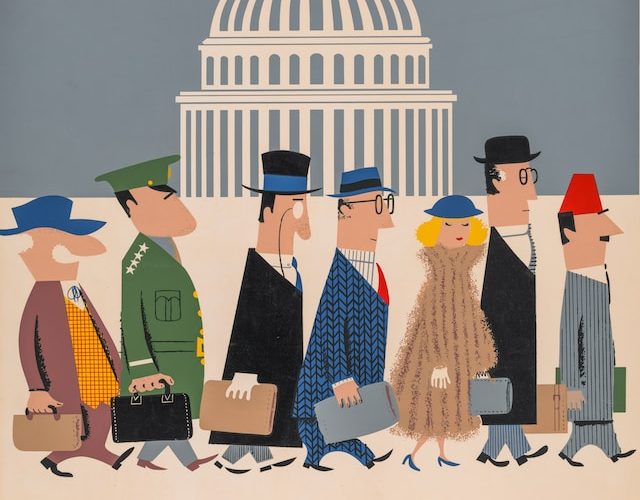When it comes to learning about history, nothing beats a good historical fiction novel. These books can transport us back in time and give us a glimpse into what life was like during some of the most important events in our nation’s history. From the Revolutionary War to the Civil Rights Movement, there are countless captivating novels set in the United States that explore these pivotal moments and bring them to life through vivid storytelling. In this blog post, we’ll take a look at some of the best historical fiction novels set during these periods and why they’re worth reading. Get ready to be transported through time!
The Revolutionary War
The Revolutionary War was a pivotal moment in American history, and there are plenty of historical fiction novels that capture the essence of this time period. One such novel is “The Hamilton Affair” by Elizabeth Cobbs. This book tells the story of Alexander Hamilton’s life from his early years as an orphan to his rise as one of America’s most influential founding fathers.
Another great read is “My Dear Hamilton” by Stephanie Dray and Laura Kamoie, which follows Eliza Schuyler Hamilton’s journey throughout her husband Alexander’s political career. The novel also delves into the social customs and politics behind the scenes during this important era.
For those looking for a more action-packed account of the Revolutionary War, “1776” by David McCullough offers a detailed look at some of the key battles that determined America’s independence from Great Britain.
All these books offer unique perspectives on different aspects of The Revolutionary War, making it easier than ever to dive into this fascinating time period through literature.
The Civil Rights Movement
The Civil Rights Movement was a pivotal moment in American history, where people of color worked tirelessly to gain equal rights under the law. From peaceful protests and boycotts to violent clashes with law enforcement, this movement changed the face of America forever.
One of the most inspiring figures from this era is Martin Luther King Jr., whose “I Have A Dream” speech still resonates with people today. His leadership and dedication helped to bring about important legislative changes such as the Civil Rights Act and Voting Rights Act.
But it wasn’t just King who fought for justice during this time; there were many other notable activists too, such as Rosa Parks who refused to give up her seat on a Montgomery bus, sparking a wave of protests across the country.
The Civil Rights Movement also had its share of tragedies, including the assassination of both King and Malcolm X. These events only served to strengthen people’s resolve in their fight for equality.
Today we still see echoes of this movement in ongoing fights for social justice, making it clear that though progress has been made since then, there is still much work left to do.
The American Revolution
The American Revolution was a pivotal moment in US history, when thirteen British colonies declared their independence and formed the United States of America. The revolution spanned from 1765 to 1783 and was marked by significant battles like the Battle of Bunker Hill, Lexington and Concord, and Saratoga.
Throughout this period, several novels have been written that vividly depict the struggles of individuals during this time. “Johnny Tremain” by Esther Forbes is one such novel that explores the life of a young apprentice silversmith who ends up getting involved with patriots fighting for freedom.
Another notable novel set during this time is “The Scarlet Letter” by Nathaniel Hawthorne which tells a story about Hester Prynne’s struggle for redemption after having an affair with her minister while her husband is still alive. This book highlights how social norms were shifting due to revolutionary ideas at play.
Historical fiction novels set around The American Revolution provide readers with a glimpse into what life was like during those times as well as insight into some of the key events leading up to US independence.
The Civil War
The Civil War, also known as the War Between the States or the War of Northern Aggression, was a pivotal moment in American history that shaped and defined the nation for years to come. Fought from 1861 to 1865 between Confederate forces led by Jefferson Davis and Union forces led by Abraham Lincoln, it stemmed primarily from tensions over slavery and states’ rights.
The war saw some of the most brutal battles in American history, with casualties numbering in the hundreds of thousands. The Battle of Gettysburg alone claimed nearly 50,000 lives. It also saw technological advancements such as ironclad ships and repeating rifles that revolutionized warfare.
While many people may know about famous figures such as Robert E. Lee or Ulysses S. Grant, there were countless other soldiers who fought bravely on both sides. Ordinary citizens were also affected deeply by the conflict– families torn apart, homes destroyed, and entire cities left devastated.
Ultimately, the Union emerged victorious after General William T. Sherman’s infamous “March to the Sea” brought Atlanta to its knees and effectively ended Confederate resistance.
The Civil War remains an important part of American history not only because it abolished slavery but because it tested our nation’s resolve and unity like never before.
The American Civil War: A Timeline
The American Civil War remains one of the most significant events in U.
S. history, with its impact still felt to this day. The conflict began on April 12, 1861, when Confederate forces attacked Fort Sumter in South Carolina.
Over the course of four years, the war raged on and resulted in over 620,000 casualties – both soldiers and civilians. Key battles included Antietam, Gettysburg, Vicksburg and Appomattox Court House where General Robert E. Lee surrendered his troops to Union General Ulysses S. Grant.
The Emancipation Proclamation was also issued during this time by President Abraham Lincoln on January 1st, 1863 which declared all slaves within the rebelling states “shall be then, thenceforward and forever free.”
The Civil War came to an end officially on April 9th when Lee surrendered at Appomattox Court House but sporadic fighting continued until May as some Confederate forces refused surrender or didn’t get word that it had taken place.
In conclusion to say that the Civil War changed America’s political landscape is an understatement; it abolished slavery and paved the way for greater civil rights movements decades later.
The Reconstruction Era
The Reconstruction Era was a period of significant change in the United States, following the end of the Civil War. It marked a time when efforts were made to rebuild and reunite the country after years of division and conflict.
During this era, there were many important social and political developments that shaped American history for decades to come. The 13th, 14th, and 15th Amendments to the Constitution were ratified during this time, which abolished slavery, granted citizenship rights to African Americans, and gave them voting rights.
However, despite these advancements towards equality for all citizens regardless of race or ethnicity, Southern states implemented discriminatory laws known as Jim Crow laws that restricted black people’s rights. This resulted in widespread institutionalized racism throughout much of America until at least mid-20th century.
The Reconstruction Era also saw tensions rise between Northern Republicans who favored black civil liberties versus Southern Democrats who sought to uphold white supremacist values. These divisions ultimately led to a divided nation with its subsequent implications lasting up until present times.
Overallm it is clear that while some progress was made during the Reconstruction Era regarding equality for African Americans in theory if not always practice it still fell short on delivering true equal opportunities making it essential now more than ever before for us as individuals and communities alike continue fighting against discrimination wherever we see it happening today.
The Gilded Age
The Gilded Age was a time of rapid industrialization and economic growth in the United States during the late 19th century. It was marked by an influx of immigrants, the rise of big business, and widespread corruption.
During this time, many American cities became centers of industry and commerce as factories began to produce goods on a massive scale. This led to an increase in wealth for some Americans while others struggled to make ends meet.
The political landscape also underwent significant changes during this era with the emergence of powerful political machines like Tammany Hall in New York City. These machines used bribery and other corrupt practices to maintain power over local politics.
Despite its name, however, the Gilded Age was not all glitter and gold. Many social issues such as poverty, child labor, and racial inequality were rampant during this period.
It was also a time when important reforms were enacted such as labor laws that protected workers’ rights and movements for women’s suffrage which secured voting rights for women across America.
The Gilded Age was a complex era that saw both progress and setbacks for American society. Its legacy continues to shape our nation today making it an intriguing topic for historical fiction novels set during this time period.
The Progressive Era
During the Progressive Era, which took place from the late 19th century to the early 20th century, there was a significant push for social and political reform in the United States. This period saw a rise in movements aimed at improving working conditions, women’s suffrage, civil rights, and consumer protection.
One of the most notable figures of this era was President Theodore Roosevelt. He believed in using government power to regulate big business and protect consumers. His efforts led to the creation of various regulatory agencies such as the Food and Drug Administration (FDA) and Anti-Trust laws.
Another prominent figure during this time was Jane Addams who co-founded Hull House – one of America’s first settlement houses located in Chicago. The movement provided essential resources like education, healthcare services for immigrants living in impoverished areas.
The Progressive Era also saw an increase in women’s activism with Susan B Anthony leading campaigns for Women’s Right to Vote while Alice Paul fought towards passing Equal Rights Amendment (ERA).
It is clear that The Progressive Era marked a significant turning point for America as it paved way for many rights we enjoy today by tackling issues on multiple fronts including labor reforms supporting unionization & child welfare initiatives among others.
World War I
World War I is one of the deadliest conflicts in human history, with millions of lives lost during its four years. It was a global war that involved several nations from different continents and marked a turning point in modern warfare. The war began in 1914 after the assassination of Archduke Franz Ferdinand, and it ended on November 11, 1918.
The United States entered World War I in April 1917, after years of neutrality. Its involvement helped tip the balance towards the Allied Powers’ favor against the Central Powers. The American Expeditionary Forces (AEF) were deployed to Europe under General John J. Pershing’s command.
During World War I, new technologies such as machine guns, airplanes, tanks and poison gas were used for the first time on a wide scale. This led to devastating casualties among soldiers who had previously fought wars with outdated tactics and equipment.
World War I also had far-reaching political consequences as it led to significant changes in international relations between countries worldwide. The Treaty of Versailles signed on June 28th, 1919 officially ended WWI but sowed seeds for future conflicts like WWII due to some harsh terms imposed upon Germany.
World War I was an unprecedented event that changed our world forever by shaping not only modern warfare strategy but also diplomatic relationships between nations around the globe even today nearly a century later
World War II
The Second World War was a monumental event in American history, and it has been the subject of countless works of historical fiction. From tales of soldiers on the front lines to stories set on the homefront, these novels capture the spirit and sacrifice of Americans during this difficult time.
Some notable titles include “The Nightingale” by Kristin Hannah, which follows two sisters living in Nazi-occupied France; “All the Light We Cannot See” by Anthony Doerr, which tells the story of a blind French girl and a German boy whose paths cross during wartime; and “The Book Thief” by Markus Zusak, which is narrated by Death himself as he watches over a young orphan girl in Germany.
These novels not only offer insight into what life was like during World War II but also remind us of the importance of courage, compassion, and resilience in times of crisis. They are an essential part of any reader’s collection for those interested in learning more about one most significant events that shaped United States’ history.












